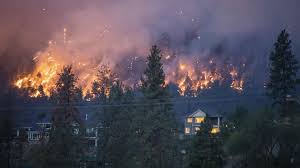The Environmental Changes Facing Greenland Today

The Significance of Greenland
Greenland, the world’s largest island, plays a critical role in global climate patterns and sea level rise due to its massive ice sheets. The importance of understanding environmental changes in Greenland cannot be overstated, as these changes have far-reaching implications for the entire planet.
Current Environmental Changes
Recent data reveals alarming shifts in Greenland’s climate. According to the National Snow and Ice Data Center (NSIDC), the ice sheet in Greenland is melting at an accelerating rate, with estimates suggesting that it lost over 600 billion tons of ice in 2019 alone. Satellite observations show that summer surface melting is becoming increasingly widespread, impacting not only local ecosystems but also contributing to global sea level rise.
Impacts on Global Sea Levels
The melting ice sheets in Greenland add approximately 1.5 millimeters to global sea levels each year. Scientists warn that if current trends continue, we could witness a potential rise of several meters by the end of the century, dramatically altering coastlines and threatening low-lying regions worldwide. The Intergovernmental Panel on Climate Change (IPCC) highlights the urgency of addressing these changes, stating that failing to mitigate climate change could result in severe consequences for millions of people.
Local Ecosystems and Communities
The impacts of climate change are not limited to the global stage; they deeply affect local communities and wildlife. Traditional livelihoods, such as fishing and hunting, are becoming increasingly challenged as changing ice conditions affect migration patterns and food availability for indigenous peoples. A report from Greenland’s Bureau of Statistics indicates that local populations are adapting through various means, but the cultural and economic disruptions caused by these environmental shifts remain profound.
Conclusion: The Need for Global Awareness
As Greenland continues to experience significant environmental changes, the importance of international cooperation and climate action becomes clearer. Understanding the dynamics at play in Greenland helps underscore the interconnectedness of climate issues, urging readers to consider their role in combating climate change. Efforts to reduce greenhouse gas emissions and promote sustainable practices are crucial in ensuring a stable climate for future generations.
As one of the most visible indicators of climate change, Greenland serves as a litmus test for global environmental health. Its fate is intrinsically linked to the planet’s future, making it a vital area for continued research and policy attention.








